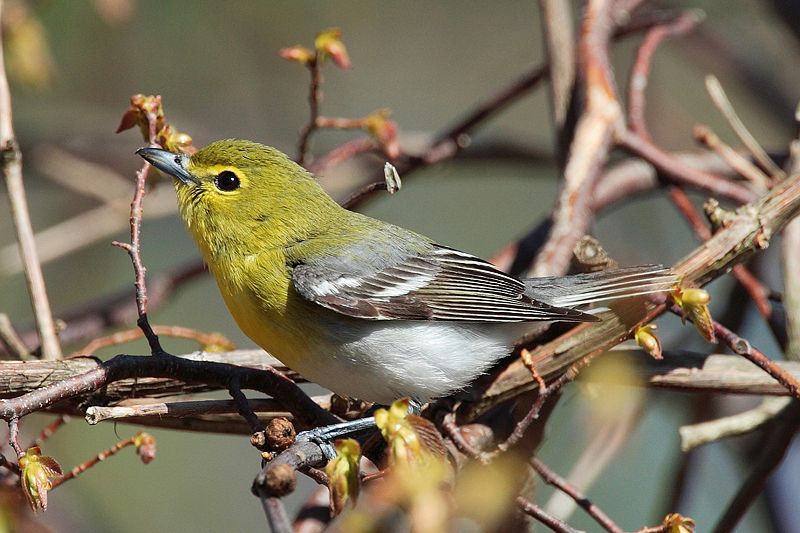 |
| yellow-throated vireo |
May 27.
The red-eye is an indefatigable singer, — a succession of short bars with hardly an interval long continued, now at 3 p. m.
I see and hear the yellow-throated vireo. It is somewhat similar (its strain) to that of the red-eye, prelia pre-li-ay, with longer intervals and occasionally a whistle like tlea tlow, or chowy chow, or tully ho on a higher key. It flits about in the tops of the trees.
I find the pensile nest of a red-eye between a fork of a shrub chestnut near the path. It is made, thus far, of bark and different woolly and silky materials.
H. D. Thoreau, Journal, May 27, 1854
The red-eye is an indefatigable singer. See May 27, 1853 ("The vireo, too, is heard more than ever on the elms; his note begins to prevail."); May 29, 1855 ("The red-eye, its clear loud song in bars continuously repeated and varied”); June 11, 1856 ("The red-eye sings incessant”); June 11, 1852 ("The red-eye sings now in the woods, perhaps more than any other bird. “); June 12, 1853 ("The red-eyed vireo is the bird most commonly heard in the woods.”) See also A Book of the Seasons, by Henry Thoreau, The Red-eyed Vireo
I see and hear the yellow-throated vireo. See August 20, 1854 (“yellow-throated vireo, heard and saw, on hickories (have I lately mistaken this for red-eye ?)”); May 28, 1855 ("Do I not hear a short snappish, rasping note from a yellow-throat vireo?"); May 29, 1855 ( "Also the yellow-throated vireo—its head and shoulders as well as throat yellow (apparently olive-yellow above), and its strain but little varied and short, not continuous.”); May 19, 1856 ("Hear and see a yellow-throated vireo, which methinks I have heard before . . . singing indolently, ullia — eelya, and sometimes varied to eelyee.”)
May 27. See A Book of the Seasons, by Henry Thoreau, May 27
H. D. Thoreau, Journal, May 27, 1854
The red-eye is an indefatigable singer. See May 27, 1853 ("The vireo, too, is heard more than ever on the elms; his note begins to prevail."); May 29, 1855 ("The red-eye, its clear loud song in bars continuously repeated and varied”); June 11, 1856 ("The red-eye sings incessant”); June 11, 1852 ("The red-eye sings now in the woods, perhaps more than any other bird. “); June 12, 1853 ("The red-eyed vireo is the bird most commonly heard in the woods.”) See also A Book of the Seasons, by Henry Thoreau, The Red-eyed Vireo
I see and hear the yellow-throated vireo. See August 20, 1854 (“yellow-throated vireo, heard and saw, on hickories (have I lately mistaken this for red-eye ?)”); May 28, 1855 ("Do I not hear a short snappish, rasping note from a yellow-throat vireo?"); May 29, 1855 ( "Also the yellow-throated vireo—its head and shoulders as well as throat yellow (apparently olive-yellow above), and its strain but little varied and short, not continuous.”); May 19, 1856 ("Hear and see a yellow-throated vireo, which methinks I have heard before . . . singing indolently, ullia — eelya, and sometimes varied to eelyee.”)
May 27. See A Book of the Seasons, by Henry Thoreau, May 27
Red-eye the singer –
a succession of short bars
with no interval.
A Book of the Seasons, by Henry Thoreau, Two vireos
A Book of the Seasons, by Henry Thoreau
"A book, each page written in its own season,
out-of-doors, in its own locality.”
~edited, assembled and rewritten by zphx © 2009-2024
https://tinyurl.com/hdt-540527





No comments:
Post a Comment